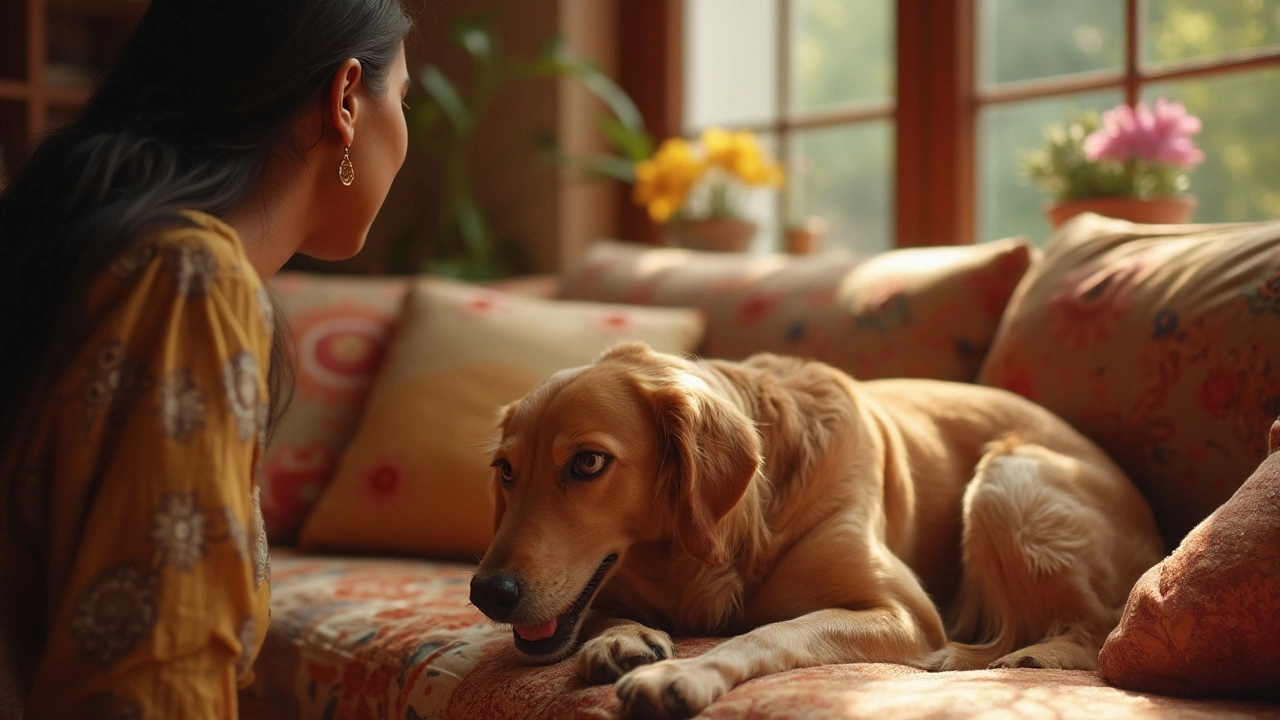Dog Psychology: Simple Ways to Read Your Dog’s Mind
Ever wonder why your dog does the things it does? From the goofy stretch when you walk in the door to the sudden panic when the TV is on, each action has a reason. Understanding those reasons is the heart of dog psychology. In this guide we’ll break down the most common behaviors, give you a few easy tricks to read body language, and show how a little knowledge can make life smoother for both of you.
Why Dogs Stretch When You Arrive
That big “downward dog” isn’t just a cute pose – it’s a greeting. When your pup sees you, the stretch signals excitement and an invitation to interact. The movement releases endorphins, so the stretch feels good and tells the rest of the pack (aka you) that everything’s safe. If the stretch is followed by a wag, you’ve got a happy dog. If the tail is low or the ears are back, the stretch could be a calming signal, meaning the dog feels a bit nervous.
TV, Music, and Separation Anxiety
Leaving the TV on can help some dogs feel less alone, but it’s not a magic fix. Low‑volume, nature sounds or dog‑focused programming can mask outside noises and lower anxiety. Turn the volume down if the dog seems agitated – loud sounds can actually increase stress. For dogs that still whine, try a calm routine: a short walk, a chew toy, and a comfy spot before you leave.
Grooming day often triggers anxiety too. The clippers, the water, the strangers – it’s a sensory overload. After a haircut, give your dog a quiet space, a favorite blanket, and a gentle massage. This tells the pup that the scary experience is over and helps the body settle back to normal.
Training sessions work the same way. Positive reinforcement, like treats and praise, creates a clear link between a behavior and a reward. Dogs quickly learn what you want when the reward is immediate and consistent. If you notice a dog freezing or looking away, back off a step and make the task easier. You’ll see progress faster than by pushing through frustration.
Housebreaking is another common question. Most puppies stop peeing inside by 4‑6 months, but the exact timeline depends on breed, age, and routine. Stick to a schedule: take the pup out first thing in the morning, after meals, and before bedtime. When they go outside, reward instantly. Consistency beats occasional long sessions every few days.
Traveling with dogs adds a new layer of psychology. Dogs see the car or plane as a new environment. A familiar blanket, a favorite chew, and a calm voice can reduce the unknown factor. If you’re flying, check airline policies early and consider a carrier that lets the dog see you. The less the dog feels trapped, the better the experience.
Lastly, remember that each dog has its own personality. Some love a bustling dog park, others prefer quiet walks. Observing how your dog reacts to different situations tells you what makes them comfortable. Use that info when you plan activities, choose toys, or decide on training methods.
Dog psychology isn’t a science you need a degree for – it’s about paying attention to the little clues your pup gives you every day. A stretch, a whine, a tail wag – all are messages. When you start listening, the bond gets stronger and everyday life becomes a lot smoother.

Why Your Dog Loves to Sit in Your Spot: A Deep Dive into Canine Behavior
When you get up and your furry friend promptly takes over your seat, it's easy to wonder about this funny behavior. Dogs often migrate to our warm spots for comfort and security. They may also be claiming the space as part of their pack behavior. Understanding this habit can deepen our bond with our pets and help us meet their needs more effectively.
read more



